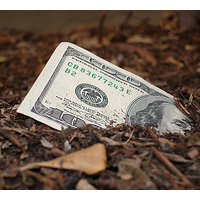New State Law Hurts Small-Time, Low-Income Recyclers

When Californians ratcheted up their daily recycling of beverage containers during the Great Recession, a testimonial in part to the newfound scavenger skills of the formerly employed, the state’s $1.1 billion recycling fund took a hit that strained its viability.
A new state law passed last year, which took effect in November, was aimed primarily at fraudsters who haul recyclables into California from states that pay less for redemption. But one of the consequences, intended or otherwise, was to dramatically reduce money paid to street folk and others who rely on recycling for survival.
The state banned the commingling of items it will redeem, like beer and soda cans, with items it won’t pay for, including wine and liquor bottles. The new rules are expected to save the state between $3.5 million and $8.5 million a year, according to the Los Angeles Times, which found anecdotal evidence that individual recyclers were earning, as a result, half of what they used to.
Critics of the recycling program say that is a good thing and some would like to see the whole program scrapped. They argue that residents pay a deposit on a bottle when they buy the product and pay again for its recycling although all of that is for naught when a person plucks it out of the recycling bin and hauls it in for redemption.
Not all of problems experience by the Beverage Container Recycling Fund were caused by scavengers and illegal haulers. The state tapped the fund for a $100 million loan in fiscal year 2010-11. Almost immediately, the fund suffered “revenue lag,” according to a CalRecycle report, and although it remained solvent, it suffered from “insufficient funds in certain months throughout the year.” The state has promised to repay an earlier loan of $172 million from the fund in 2012-13.
Recycling rates in California have risen from 56% in 1989 to 82% now, according to the California Department of Resources and Recycling (CalRecycling). That’s good for the environment and raises people’s consciousness about keeping planet Earth relatively clean of man-made refuse.
But out-of-staters have taken advantage of the state’s aggressive recycling laws, regularly hauling in tons of bottles and cans. The state officially estimated that fraud costs the state about $40 million a year, but some speculate that the number may go as high as $200 million.
The new law addresses that by putting per day limits of 100 pounds for eligible aluminum or plastic containers and 1,000 pounds for qualifying glass. The old limits were 500 pounds and 2,500 pounds, respectively for the two.
What doesn’t change is the pass given to wine and liquor companies whose bottles are not subject to recycling. In a testimonial to the industry’s lobbying prowess, lawmakers have let them slide on the nickel recycling charge that is tacked on to the sale of other bottled and canned products.
Homeless people lack that kind of political punch.
–Ken Broder
To Learn More:
California Recycling Law Hurts the Homeless (by Derek Prall, American City and County )
New Redemption Law Puts Squeeze on Bottle and Can Recyclers (by Gale Holland, Los Angeles Times)
CalRecycle Takes Action to Deter Fraud with New Limits on Beverage Container Recycling Volumes (CalRecycle)
- Top Stories
- Controversies
- Where is the Money Going?
- California and the Nation
- Appointments and Resignations
- Unusual News
- Latest News
- California Forbids U.S. Immigration Agents from Pretending to be Police
- California Lawmakers Urged to Strip “Self-Dealing” Tax Board of Its Duties
- Big Oil’s Grip on California
- Santa Cruz Police See Homeland Security Betrayal in Use of Gang Roundup as Cover for Immigration Raid
- Oil Companies Face Deadline to Stop Polluting California Groundwater





